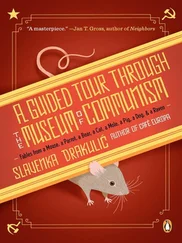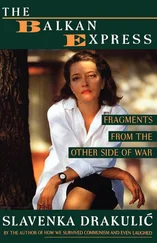Alex had been the leader of their little group. He had made school less of a bore. They had been together for three years, from the beginning of secondary school until the accident. It was probably he who had saved her life. His visits to her in the hospital became fewer and farther between, and then he left. In order to separate him from his bedridden girlfriend, his parents, to whom it was clear that the accident had left her permanently disabled, sent him on a long voyage to Europe. As far away from her as possible. Later she wondered whether Alex had sensed even then how much the accident would change their relationship.
In Self-Portrait , the expression on her face is soft, the look melancholic, with a trace of a sad smile. Her body presents a hidden challenge, but her face is serious, the eyes quiet and sorrowful. The painting suggests gentleness, tenderness, spirituality. And loneliness in the enveloping blackness that separates her from her environment. This is Frida’s only self-portrait where she is still a gentle, vulnerable, strikingly feminine girl who seems to be asking Alex to protect her. This softness is absent from her later self-portraits, where it is as if she had donned a suit of armor. Or a mask.
That same year she painted a portrait of her sister Adriana, wearing a dress with a plunging neckline. Her shoulders and breasts seem to be spilling out of the dress, which looks as if it is about to slip off the smooth white skin and bare her voluptuous body. It is as if Frida had deliberately painted this portrait as the exact opposite of herself. There is not a trace of restraint or refinement in Adriana, she is pure sensuality. However, there is a light in the cloudy sky behind her, a cupola with an illuminated window. For her there is hope, whereas for Frida there is only dark, enclosed space.
It was only much later that she realized how different this painting was from all her other self-portraits. And it was not just because of her artistic inexperience. This first self-portrait was different because she had painted it with a secret motive — she wanted it to win back Alex for her. It was a clear attempt to lure Alex back the only way left open to her.
After receiving her portrait, Alex did return to her and for a while they were together again. Frida was already becoming aware of what would later become the hallmark of her paintings: their power of speech.
Suddenly she grew up. As if until the accident she had been living without any real awareness of herself, like a baby monkey leaping from branch to branch, screeching in delight, with occasional reminders that it was not quite like the others. She remembered that feeling, that periodic bliss of self-oblivion, though ever since childhood she had sensed the hovering presence of a dark shadow overhead. Sometimes, lying on her back in the yard, gazing up at the square patch of sky framed by the walls of the houses, out of nowhere a cloud would appear in the clear blue sky, suddenly darkening the yard. And she would shiver. Or she would crawl into bed at night exhausted and just before dropping off, her eyes already closed, her body curled up under the scratchy sheet (she could still feel it even now, in that same bed), she would sometimes imagine the touch of a cold hand. Such unexpected moments left her shuddering.
Yet, her growing power of resistance made her quickly forget it all. The euphoria that usually followed reminded her of playing hide-and-seek or a game of chess. As if she had escaped death one moment only to be dealt an even harder blow the next.
I know now that everything after the accident was merely a tactic to indulge in escapism and self-delusion. When you are hit by a streetcar that almost smashes you to a pulp, when you experience your own end. there is no recovery, only temporary respite, she thought.
Pain made me aware of my body. My body made me aware of deterioration and death. That awareness made me old. My death sentence may have been deferred, but I now had to live with a twofold realization. Not only was I going to die — there was nothing unusual about that except that I was made to realize it at a tender age — but I knew exactly what that meant. Because I had already been through it. Unlike other condemned people for whom death is an abstraction because they have no idea what really awaits them, my stay of death came with a constant reminder, the presence of pain.
She was nineteen before she finally stood on her feet again. The money for her education had run out. She had to find a job. The only thing she had learned to do during her convalescence was paint. At a party she met the Maestro, Mexico’s most famous painter, and afterward she got it into her head that she had to show him her paintings. He would tell her, she decided, whether there was any point to her plan. It never occurred to her that the Maestro might refuse. She had been unusually willful even as a child, but after the accident she became positively bullish. She dared to do what others didn’t because she had the courage of someone who has nothing to lose.
She set off for the building where the Maestro was working on a fresco. Since she could not carry her canvases up to the scaffold, she asked him to come down. Intrigued by the petite girl with the husky voice, the Maestro climbed down. He walked over to Frida and studied her interesting face, with its full mouth and thick black eyebrows. Without flinching, she looked him straight in the eye. She had brought three of her paintings with her. They were leaning against the front wall of the building he was working on. She turned the pictures around for him to see. She had no time to lose, she said, she was in urgent need of work. She painted because she found it the easiest and least boring of occupations. It would be good if she could earn some money from it. The Maestro’s opinion of her work would determine if she should be looking for another occupation, since she had no intention of deluding herself that she was talented if she wasn’t. Could he help her by telling her the truth? She said it all in a rush, without pausing for breath. Then she folded her arms across her chest and looked at him.
She did not tell him that painting had been her only salvation from the isolation in which she had been living, that she liked how painting completely absorbed her and that when she painted she felt as if she had rediscovered her little friend in the ice palace.
The Maestro looked at the paintings carefully; her request was unusual, but he liked her explanation, especially when she said that she found painting the least boring way to earn money. He was touched by her decisiveness and seriousness. She stood there waiting, impatient, tense. The Maestro was taking too long to examine the paintings.
She was unquestionably talented, he told her, but he wanted to see more of her work before pronouncing upon something so important. She invited him to visit her at her parents’ house. He promised he would. Only then did she breathe a sigh of relief. If the Maestro liked her other canvases as well, perhaps she really could earn a living from painting. All she could think about at the time was money, and her father who no longer had enough work. He had become more and more depressed. The days when Don Guillermo could earn a decent living as a photographer were long gone. And then there was her mother, worn out by her daughter’s illness and her own, by obligations and the fear of poverty. Frida had survived the accident but her doctors, medicine and leg braces still had to be paid for. If the Maestro gave her his support, maybe things would change.
A few days later, when he saw her small home exhibition, the Maestro was no longer in any doubt that he had before him an exceptional talent. You must paint, he told her seriously. He was looking at her and her paintings as if he could not get enough of them. It was as if he could not entirely separate the paintings from the unusual person who had done them. What especially impressed the Maestro was the fact that she had preferred to paint rather than use her illness as an excuse to do nothing. There was something unusual, admirable about this girl, about her brusqueness, her thirst for life that was so evident in her every movement. Moreover, he discovered that she had recently joined the Communist Party, which gave them something else in common. After art, politics was the second most important thing in his life, but for her and her new artist friends, like Tina Modotti, ideology was less important than the opportunity it gave them to be together.
Читать дальше












